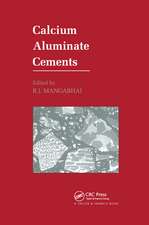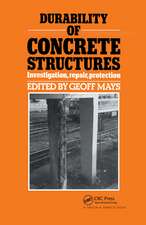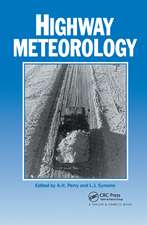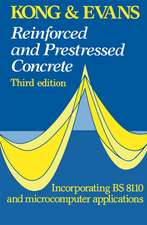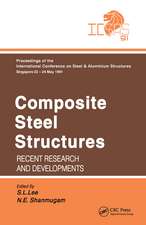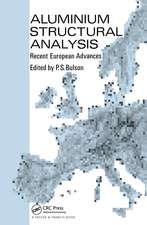Reciprocal Frame Architecture
Autor Olga Popovic Larsenen Limba Engleză Hardback – 11 apr 2016
Starting with historic designs by de Honnecourt, Da Vinci and Serlio, the book presents the wealth of possible RF morphologies, and investigates the geometrical, structural and practical design issues of reciprocal frames.
The case studies look at stunning examples of reciprocal frame architecture that range from low environmental impact buildings and self built examples in the UK and USA, to the fascinating and elegant structures of the Puppet Theatre in Seiwa, Tokyo's Spinning House, Sukiya –Yu house, The Toyoson Stonemason museum and the Life Sciences Laboratory – Torikabuto in Japan.
The book is designed to inform and inspire architects and structural engineers alike, and brings to life a structural system whose principles have been used for thousands of years.
Preț: 948.72 lei
Preț vechi: 1156.97 lei
-18% Nou
Puncte Express: 1423
Preț estimativ în valută:
181.54€ • 190.02$ • 151.10£
181.54€ • 190.02$ • 151.10£
Carte disponibilă
Livrare economică 10-24 martie
Livrare express 22-28 februarie pentru 35.73 lei
Preluare comenzi: 021 569.72.76
Specificații
ISBN-13: 9781138142244
ISBN-10: 1138142247
Pagini: 206
Dimensiuni: 189 x 246 x 21 mm
Greutate: 0.68 kg
Ediția:1
Editura: Taylor & Francis
Colecția Routledge
Locul publicării:Oxford, United Kingdom
ISBN-10: 1138142247
Pagini: 206
Dimensiuni: 189 x 246 x 21 mm
Greutate: 0.68 kg
Ediția:1
Editura: Taylor & Francis
Colecția Routledge
Locul publicării:Oxford, United Kingdom
Public țintă
Professional Practice & Development and Professional ReferenceCuprins
Introduction; Background – the reciprocal frame historically; Morphology; Geometry; Structural behaviour; Japan – a home of RF structures; The reciprocal frame architecture of Kazuhiro Ishii; Torikabuto – the Life Science Laboratory designed by Yoichi Kan; The Stonemason Museum by Yasufumi Kijima; The reciprocal frame as a spiritual structure – the work of Graham Brown; Built examples; Postscript
Descriere
In structural terms reciprocal frame structures are 'three dimensional assemblies of mutually supporting beams'. But behind this definition lie some breathtakingly beautiful and complex structures at the heart of buildings both ancient and modern. This new book explores the principles of these apparently simple structures and demonstrates how they can be used in the context of a modern building.
Starting with historic designs by de Honnecourt, Da Vinci and Serlio, the book presents the wealth of possible RF morphologies, and investigates the geometrical, structural and practical design issues of reciprocal frames.
The case studies look at stunning examples of reciprocal frame architecture that range from low environmental impact buildings and self built examples in the UK and USA, to the fascinating and elegant structures of the Puppet Theatre in Seiwa, Tokyo's Spinning House, Sukiya –Yu house, The Toyoson Stonemason museum and the Life Sciences Laboratory – Torikabuto in Japan.
The book is designed to inform and inspire architects and structural engineers alike, and brings to life a structural system whose principles have been used for thousands of years.
Starting with historic designs by de Honnecourt, Da Vinci and Serlio, the book presents the wealth of possible RF morphologies, and investigates the geometrical, structural and practical design issues of reciprocal frames.
The case studies look at stunning examples of reciprocal frame architecture that range from low environmental impact buildings and self built examples in the UK and USA, to the fascinating and elegant structures of the Puppet Theatre in Seiwa, Tokyo's Spinning House, Sukiya –Yu house, The Toyoson Stonemason museum and the Life Sciences Laboratory – Torikabuto in Japan.
The book is designed to inform and inspire architects and structural engineers alike, and brings to life a structural system whose principles have been used for thousands of years.






